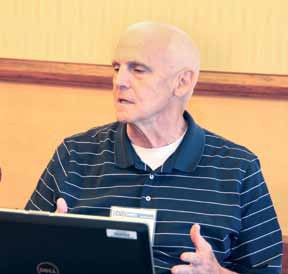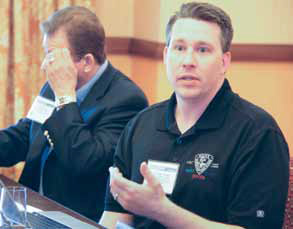Blended and Flipped Learning

Teachers have begun to more commonly reach for digital resources when building, implementing, and engaging students in classroom experiences. As a result there is an opportunity to reconsider and perhaps reshape the structure of time, communication, collaboration, expectations, and the physical space of the classroom.
These ongoing changes led us to investigate the impact that “blended” and “flipped” learning are having on our schools.
A common understanding among the group was that any classroom that made use of digital resources was starting to blend learning. As Karen Fuller from Klein ISD in Texas explains, “Blended learning in our district is defined as utilizing all resources that have been provided to engage the students in learning.”
Colby Culbertson from Western Dubuque School District in Iowa was careful to include all resources, both inside and outside of the classroom, real and virtual, as those that teachers are accessing while building engaging, student-centered instruction. Adam Seldow, Executive Director of Technology & Research of Chesterfield County Public Schools, VA, expands the need for “combining the best of face-to-face instruction with online instruction where students have a greater ability to collaborate in and affect their own learning anytime, from anywhere” into blended learning. Flipped learning, where students begin to interact with new concepts or ideas outside of the traditional classroom space and then are asked to use some of that prior knowledge when entering the classroom, is one of the strategies for blended learning that is growing in popularity. Ray Eernisse, CIO of Francis Howell School District, MO, pointed out that flipped learning is a great starting point for teachers who want to get started with blended learning. Lisa Andrejko, superintendent, QCSD, Quakertown, Pennsylvania, brought in the idea of flexibility in blended learning by pointing out that eventually teachers’ and students’ schedules and physical locations will change as students display mastery at their own pace and in their own ways.
The emergence of easy-to-use tools for recording or creating content, robust learning management and student information systems, digital content systems for text, image, or video resources (including Open Educational Resources), formative and summative assessment and analysis tools, and collaborative communication systems has helped schools move forward with blended learning.
One of the other key components to successful blended learning was providing adequate network infrastructure, wireless access, and bandwidth at school while working to help students access the Internet while off school grounds. All of the schools participating at the summit had made significant investments in network infrastructure over the past few years. The common opinion was that Internet access and WiFi are now utilities that will be expected at schools. For helping students outside of school, many creative paths have been taken, such as partnering with Comcast Internet Essentials, finding locations in the community, such as libraries or restaurants, or extending school media center hours.
The discussion wrapped up around resistance to blended learning. However, other challenges still exist, including finding time for professional learning, fear of change or giving up control, and rapidly changing expectations. Some schools are facing competition from virtual or charter schools, which has raised the pressure to adopt more digital practices.
Tools and ideas to transform education. Sign up below.

Those schools that have been leading the way in this area are seeing changes in how their students and teachers think about schools. Some are opening up “learning commons” where students have space to work and create, on their own or in small groups, outside of the traditional classroom. Other interesting questions emerged about how a more blended environment will require us to rethink much of what we have done procedurally, such as attendance, graduation requirements, seat time, substitute teachers, and class sizes.
The overall opinion was that blended learning is driving learning to become more outcome-based, where the value of learning comes from the process and the days of questions that can be “Googled” are fading away. In the end our students will be more prepared for their future as a result.
